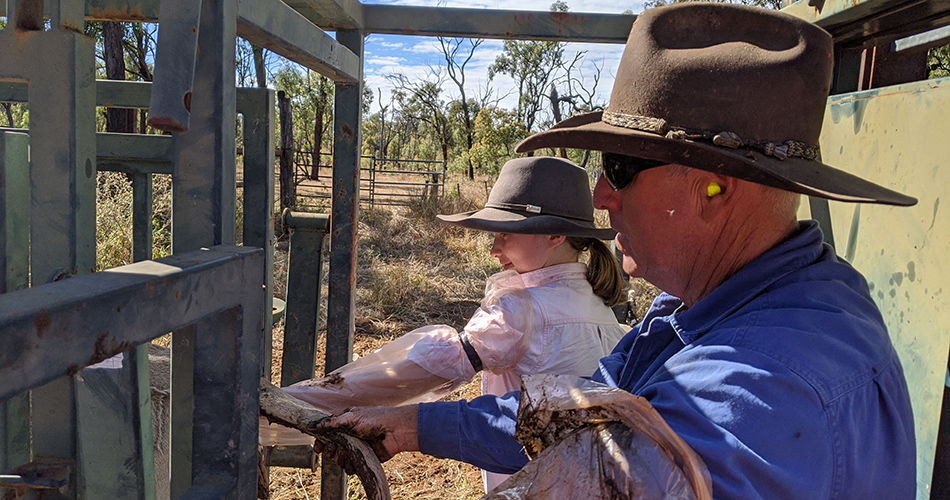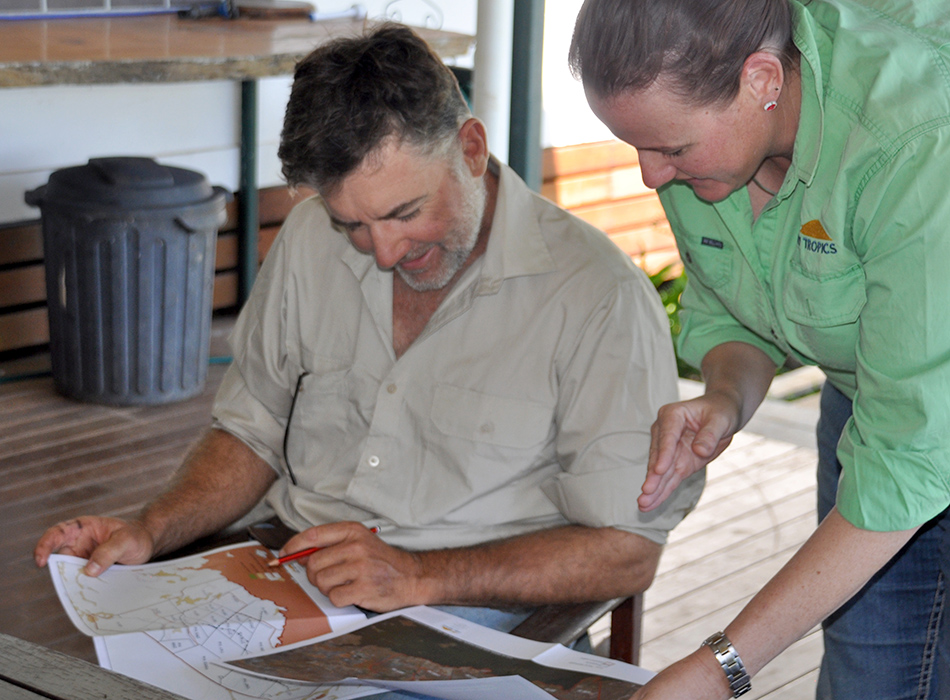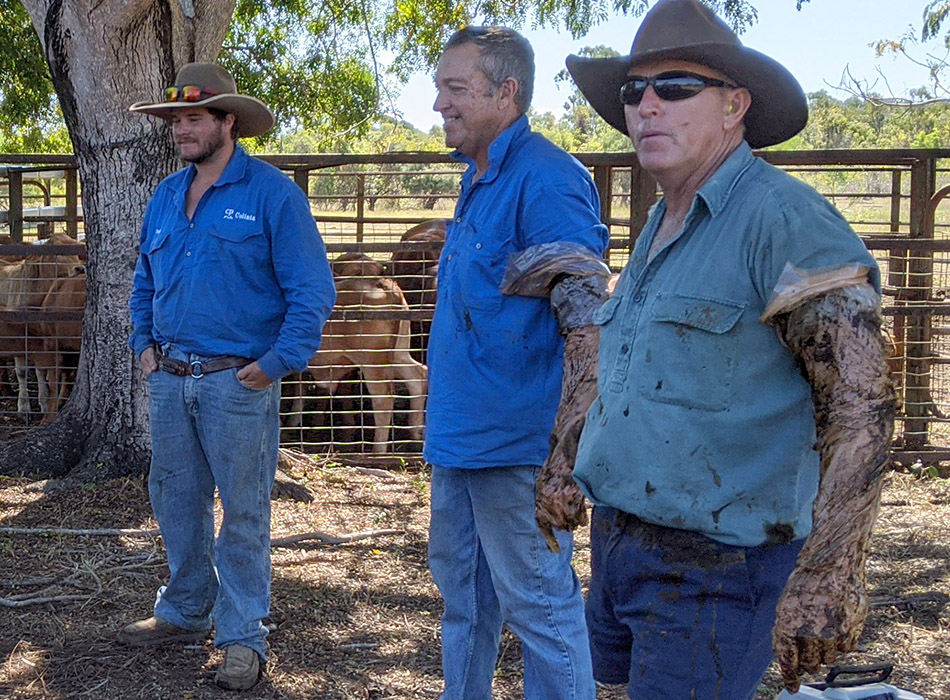
Claire Murphy, 12, Gregory Springs Station, with Dr Ian Braithwaite
Fine-tuning breeder herds for profitability and resilience
MORE of a good thing was the philosophy behind a sweep through the North by breeding herd management expert Dr Ian Braithwaite last month.
Building on the foundations of his Breeder Management and Pregnancy Testing workshops, five properties participating in NQ Dry Tropics’ Reefwise Grazing of Burdekin Rangelands project each benefited from a one-day consult with Dr Braithwaite.
After a quick planning session, it was all business crush-side as graziers took a fresh look at their heifer management, 12-month rebreed rates and reproductive diseases, using the results of preg testing and foetal aging conducted by Dr Braithwaite.
Further discussions linked fundamental financial and grass decisions to breeder herd performance. Dr Braithwaite used desired profit margins to work backwards to get a clear picture of stockflow and herd dynamics.
Central to optimising the performance of the breeder herd was being able to have the right animals on the right grass at the right time of the year.
Dr Braithwaite said being able to detect only if a cow was pregnant or empty was limiting as there was so much more valuable information available.
“Foetal ageing into calving groups shows what the herd is doing now and where it will likely be in 12 months,” he said.
Ross, Tracey and Liam Tapiolas at Six Mile Station, Home Hill learned that by focusing on the October to December calving group, and putting effort into maintaining female body condition score at 3.5, would increase the chance of reconception and calving at the right time the following year.
“The 12 month rebreed rate in the north can be tough to achieve, but implementing strategies like keeping a good body of feed late into the dry season and using specific supplement programs will increase the chances of it occurring”, Dr Braithwaite said.
NQ Dry Tropics Grazing Team Leader Linda Anderson said discussions like that were designed to set up strategies for managing grass and cattle for each business.
“The most limiting factor of a beef breeding business is grass,” she said.
“Herd productivity suffers if females aren’t on enough good quality grass late in the dry.
“The trap is then set; more breeders are kept to achieve the same number of calves to grow and sell, so there are more big mouths that feed on an already struggling grass base.
“Identifying and keeping those reproductively performing females is essential, as is digging out the freeloaders in the herd and finding the best financial option for their dispersal.”
Dr Braithwaite and Ms Anderson spent a day each at The Brook, and Ewan Hills Stations north of Charters Towers; Clothes Peg and Gregory Springs Stations north of Hughenden; and Six Mile Station near Home Hill.
Darcy and Lynda O’Brien, The Brook Station north of Charters Towers said Dr Braithwaite’s experience and accountancy perspective was invaluable.
“He looks at the picture through multiple lenses,” Mr O’Brien said.
“Whether we are discussing animal health or grass management, Ian always brings the emphasis back to our business being profitable. He clears out the ‘noise’ and helps us with targeted strategies and good decisions.”
Pete and Kate Murphy at Gregory Springs Station found immediate value in Dr Braithwaite’s ability to understand their business and suggest strategies that create efficiencies and improve profitability.
“Preg testing is one thing, but Ian brings a new perspective with connecting this to cash flow and profits,” Mr Murphy said.
“We are going to focus on our heifers immediately, as Ian highlighted this is possibly a weaker link in our business. We are also going to look at when and how we muster, preg test and wean to put efficiency in our system.”
Ms Anderson is encouraging those properties visited to pool resources and use professional services like Dr Braithwaite’s every year, to continue finessing their breeding operations.
The project, funded by the partnership between the Australian Government’s Reef Trust and the Great Barrier Reef Foundation, aims to help graziers adopt practices that will deliver more profitable businesses and more resilient landscapes.
Visit the NQ Dry Tropics website at www.nqdrytropics.com.au for more details.

Owner of The Brook cattle station west of charters Towers Darcy O’Brien (centre) explains the detail of his property infrastructure to NQ Dry Tropics Senior Field Officer – Grazing Linda Anderson.

Dr Ian Braithwaite (right) with Six Mile Station graziers (from left) Liam and Ross Tapiolas pause during preg testing on the property.
